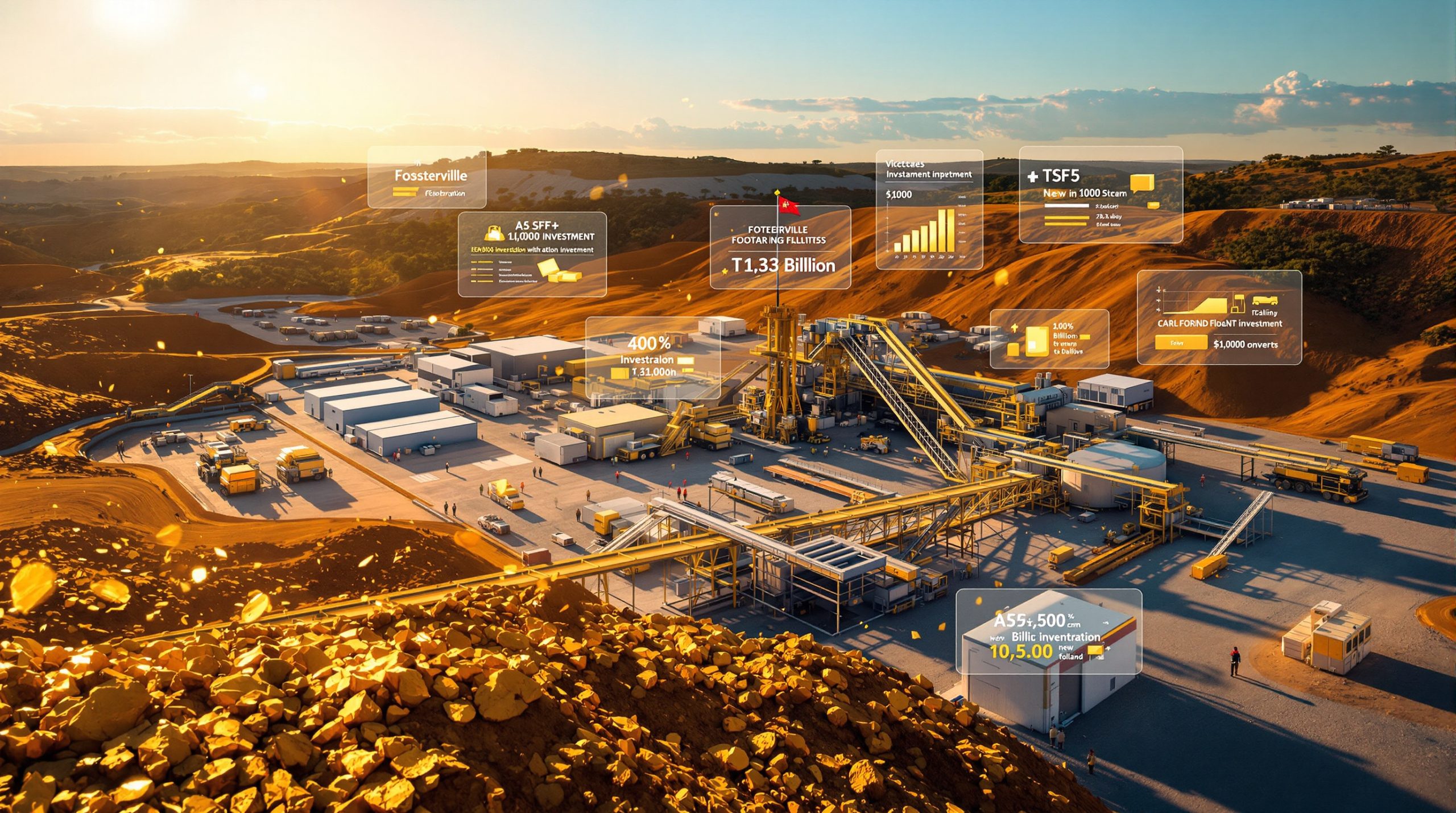What Is Driving the Current Copper Price Rally?
Copper futures have surged to their highest levels since May 2024, with prices reaching approximately $10,775 per metric ton as of October 2025. This remarkable 3.45% daily gain marks the second-largest increase in a 30-day period, signaling renewed momentum in the copper market. The rally reflects a complex interplay of several critical factors reshaping market dynamics.
The recent price surge stems primarily from supply constraints across major mining regions, coupled with a weakening U.S. dollar that has provided substantial support for commodity prices globally. Beyond these short-term catalysts, a fundamental structural shift is occurring as copper demand transitions from traditional industrial cycles to green energy applications.
Market analysts note that while supply disruptions and currency dynamics have driven the initial price movement, sustained momentum will require stronger demand signals, particularly from China. The current rally demonstrates copper's unique position at the intersection of industrial demand, monetary policy impacts, and emerging green economy requirements.
Key Factors Behind the Recent Price Surge
Supply Disruptions: Major production challenges across key mining regions have created significant supply shortfalls. Recent mining disruptions in several copper-producing countries have tightened market conditions considerably, leaving buyers competing for limited available supply.
Currency Influences: The weakening U.S. dollar has played a substantial role in supporting copper prices. As the dollar loses strength against major currencies, dollar-denominated commodities like copper become more affordable for buyers using other currencies, stimulating additional demand.
Structural Market Changes: The copper market is experiencing a fundamental transformation as demand shifts from traditional industrial cycles to green energy applications. This evolution creates new consumption patterns that may be less cyclical and more structurally persistent than historical demand trends.
How Are Supply Constraints Affecting Copper Markets?
The copper supply chain faces significant challenges that have created a persistent market tightness. Production issues across multiple regions have converged to create favorable pricing conditions that cannot be quickly resolved through normal market mechanisms.
Global Production Challenges
Recent mining disruptions have significantly tightened copper supply chains worldwide. Production challenges in major copper-producing regions have created a supply deficit that continues to support higher prices. These disruptions range from operational issues at established mines to delays in bringing new capacity online.
The impact of these challenges is magnified by copper's critical role in multiple industrial applications, creating a situation where even modest production shortfalls can have outsized price impacts. With limited inventory buffers, the market has become increasingly sensitive to any news of potential supply interruptions.
Mine Development Limitations
New copper project development remains constrained by several factors that limit the industry's ability to respond to price signals:
-
Environmental permitting delays have extended project timelines by years in some cases, as regulatory requirements become increasingly stringent
-
Rising capital expenditure requirements mean new projects require significantly higher copper prices to achieve acceptable returns, with some developments now costing billions rather than millions to bring online
-
Technical challenges in developing lower-grade deposits as the industry moves from easily accessible high-grade ore bodies to more complex, deeper, or lower-grade resources
-
Political uncertainties in key mining jurisdictions create additional risk premiums for projects in regions with evolving regulatory frameworks or resource nationalism concerns
Supply Response Timeline
The copper market faces a structural challenge: even with current price incentives, new mine development typically requires 7-10 years from discovery to production. This extended timeline means supply cannot quickly respond to price signals, creating persistent market imbalances.
This development cycle creates a fundamental mismatch between market signals and supply responses. By the time new production comes online in response to today's high prices, market conditions may have changed significantly. This dynamic contributes to the boom-bust cycles that have historically characterized copper markets.
What Role Is China Playing in Copper Market Dynamics?
China's influence on global copper markets remains paramount, with its consumption patterns, strategic priorities, and economic policies serving as critical price determinants. Understanding Chinese market behavior provides essential context for interpreting current price trends.
Chinese Demand Patterns
China's consumption patterns remain the dominant influence on global copper markets, accounting for approximately 50% of global refined copper demand. Recent industrial recovery efforts and infrastructure stimulus measures have provided support for prices.
This outsized market share means even modest changes in Chinese consumption patterns can create significant global market impacts. Recent industrial recovery efforts following pandemic-related disruptions, coupled with infrastructure stimulus initiatives, have underpinned price strength through 2025.
The country's Five-Year Plan priorities and infrastructure development goals continue to drive substantial copper price prediction requirements across construction, manufacturing, power infrastructure, and transportation sectors. These strategic imperatives provide a floor for Chinese copper demand even during periods of broader economic adjustment.
Price Sensitivity Thresholds
Market analysts have identified key price thresholds where Chinese buyers may adjust their purchasing behavior:
| Price Level (USD/ton) | Expected Buyer Response |
|---|---|
| Below $9,000 | Aggressive purchasing |
| $9,000-$11,000 | Normal procurement |
| Above $11,000 | Potential demand destruction |
These thresholds reflect both economic considerations and strategic priorities. At lower price points, Chinese buyers often accelerate purchases to build inventories and secure supply. As observed in mid-2024, when prices exceeded $11,000 per ton, Chinese buyers demonstrated restraint, implementing a more selective procurement approach.
Understanding these behavioral thresholds provides valuable insight into potential price ceiling effects. The current price level around $10,775 sits near the upper boundary of normal procurement behavior, suggesting prices may face resistance if they move substantially higher.
Strategic Stockpiling
China's strategic metal reserve activities can significantly influence market sentiment and price direction, though these movements are often not transparent to market participants.
The country's State Reserve Bureau periodically engages in both buying and selling activities as part of its broader commodity management strategy. These interventions, which can involve substantial volumes, often occur with limited market visibility, creating price volatility when they become known.
Beyond official stockpiles, various forms of "invisible inventory" exist throughout China's industrial supply chain, providing buffers against supply disruptions and price volatility. These inventories can be rapidly deployed during periods of market tightness, potentially dampening price rallies.
How Are Energy Transition Needs Transforming Copper Demand?
The global shift toward renewable energy and electrification is fundamentally altering copper demand patterns. This structural transformation creates new consumption sources that operate independently from traditional economic cycles.
Electrification Requirements
The global energy transition is creating new structural demand for copper across multiple sectors:
-
Electric vehicle production requires substantially more copper than conventional vehicles, with each EV using approximately four times the copper content of an internal combustion vehicle. This increased intensity stems from copper's use in batteries, wiring, electric motors, and charging infrastructure.
-
Renewable energy infrastructure, particularly wind and solar installations, requires significant copper inputs. Wind turbines can contain up to 4.7 tons of copper per megawatt of capacity, while solar photovoltaic systems use copper in wiring, inverters, and transformers.
-
Grid modernization and expansion projects require substantial copper for transmission and distribution infrastructure. The transition to smart grids, with their increased connectivity and monitoring capabilities, further increases copper intensity.
-
Energy storage systems employ copper in battery components, connections, and thermal management systems, creating another growth vector for surging copper demand.
These applications collectively create a new demand foundation that is expected to grow regardless of traditional economic cycles, as the energy transition proceeds based on policy mandates and declining renewable technology costs rather than solely economic growth considerations.
Data Center Growth
The expansion of data centers and AI infrastructure is emerging as a significant new demand driver, with each facility requiring substantial copper inputs for power distribution and cooling systems.
This trend represents a relatively new but rapidly growing consumption source. Modern hyperscale data centers can require millions of pounds of copper for power systems, cooling infrastructure, and networking components. The growth of artificial intelligence applications, with their intensive computing requirements, is accelerating this demand.
While some analysts question whether data center demand projections have been overstated, the sector's copper requirements are substantial on a per-facility basis. As digital transformation continues globally, this demand source will likely become increasingly significant for copper markets.
What Are Analysts Forecasting for Future Copper Prices?
Market forecasts show significant divergence, reflecting uncertainty about demand growth, supply responses, and macroeconomic conditions. These varied outlooks provide important context for interpreting current price movements.
Divergent Price Outlooks
Market forecasts show significant divergence, reflecting uncertainty about demand growth and supply response:
| Analyst | Short-Term Forecast (2026) | Medium-Term Forecast (2027-28) | Key Assumption |
|---|---|---|---|
| UBS | $12,000/ton | $13,250/ton | Supply deficit persists |
| Goldman Sachs | $10,000-11,000/ton | $10,000-11,000/ton | Market rebalancing |
| ING | Cautious outlook | Dependent on Chinese demand | Demand growth needed |
UBS has recently raised its 2026-2028 copper price forecasts by approximately 15%, targeting around $6 per pound (roughly $13,250 per ton) in 2027. The bank expects limited mine supply growth to lead to market tightness within the next year, supporting higher prices. UBS emphasizes that new mine development remains constrained while demand linked to electrification and renewable infrastructure continues to expand.
Goldman Sachs maintains a more conservative stance, projecting copper prices will remain in a range of $10,000 to $11,000 per ton through 2026 and 2027 due to a potential market surplus. The bank's analysts identify several factors that could cap price gains, including Chinese purchasing behavior at elevated prices and potential inventory rebalancing.
ING maintains a cautious outlook, noting that stronger demand growth, particularly from China, would be necessary for rally continuation. The bank emphasizes that Chinese industrial recovery pace and infrastructure stimulus implementation will be decisive for price direction.
Critical Market Indicators
Analysts are closely monitoring several key indicators that could signal future price direction:
-
LME inventory levels and trends provide real-time insight into market tightness or surplus conditions. Declining inventories typically support higher prices, while building stocks suggest potential price weakness.
-
Chinese manufacturing PMI data offers forward-looking indications of industrial activity in the world's largest copper consumer. Expansion or contraction signals can influence price expectations substantially.
-
Infrastructure spending implementation rates in major economies, particularly China, provide insight into actual copper demand versus announced stimulus measures. Execution gaps between announced and implemented projects can create market surprises.
-
New mine commissioning timelines for major projects under development help forecast supply additions. Delays or accelerations can significantly impact medium-term market balance expectations.
These indicators collectively provide a framework for anticipating potential price trajectory changes before they manifest in spot market movements.
How Is the Copper Rally Impacting African Producing Nations?
African copper producers stand to benefit substantially from the current price environment, with potential improvements in fiscal positions, export earnings, and development capacity. However, realizing these benefits requires addressing persistent operational and structural challenges.
Economic Implications for Zambia
For Zambia, the copper price surge represents a significant economic opportunity:
-
Current prices exceed the government's 2025 reference assumption of $9,546/ton, creating potential for fiscal outperformance and budget flexibility
-
Production target of approximately one million metric tons could generate substantial export earnings if achieved, strengthening the country's trade balance and currency stability
-
Fiscal revenue improvements through mining royalties and taxes would enhance government capacity to address development priorities and service obligations
-
Potential for increased investment in expansion projects as improved cash flows enable mining companies to commit capital to growth initiatives
These positive effects depend critically on Zambia's ability to maintain stable operating conditions, particularly reliable power supply and consistent production from major mining operations. Historical challenges in these areas have sometimes prevented the country from fully capitalizing on favorable price environments.
DR Congo's Market Position
The Democratic Republic of Congo stands to benefit substantially from sustained higher prices:
-
Strengthened fiscal position through dollar-denominated export earnings, enhancing government revenue generation capacity during a period of economic adjustment
-
Support for recent monetary and fiscal reforms that have contributed to local currency appreciation and macroeconomic stabilization
-
Buffer against volatility in other commodity markets (particularly cobalt), providing economic resilience during periods of market turbulence
-
Improved ability to fund development priorities through enhanced local currency resources generated from dollar-denominated export earnings
As one of the world's leading producers of both copper and cobalt, the DRC's mining sector represents a critical economic foundation. Higher copper prices strengthen this foundation at a time when other revenue sources may face challenges.
Regional Development Challenges
Despite price improvements, both countries face ongoing challenges in maximizing benefits from their mineral resources:
-
Power supply reliability issues continue to constrain production potential, particularly in Zambia's Copperbelt region, where electricity shortages have historically impacted output
-
Infrastructure constraints in transportation, logistics, and export capacity limit the efficiency of getting product to market and increase overall production costs
-
Regulatory uncertainty creates challenges for long-term investment planning and capital allocation decisions by mining companies
-
Need for value addition and processing capacity to capture more of the copper value chain domestically and reduce reliance on raw material exports
Addressing these structural challenges would enable both countries to derive greater sustainable benefit from copper resources, regardless of price fluctuations. The current favorable price environment provides an opportunity to invest in solutions to these persistent challenges.
What Could Disrupt the Current Copper Price Rally?
While supply constraints and energy transition demand support current prices, several factors could potentially derail the rally. Understanding these potential disruptors provides a more complete perspective on market risks.
Potential Market Headwinds
Several factors could potentially cap price gains or reverse the current upward trend:
-
Accelerated production from existing mines could increase supply faster than anticipated if operations overcome current constraints or implement productivity improvements
-
Faster-than-expected development of new projects might shift market balance expectations if key mines advance ahead of projected timelines
-
Demand destruction at sustained high price levels could emerge as manufacturers implement material substitution strategies or redesign products to reduce copper intensity
-
Economic slowdown in major consuming regions would reduce industrial demand, potentially offsetting growth from energy transition applications
The interplay between these factors creates a complex risk landscape for current price levels. While structural support from energy transition demand remains strong, cyclical economic factors still influence significant portions of global copper supply forecast.
Inventory Dynamics
Excess inventories, particularly in the United States, could quickly rebalance the market if London Metal Exchange spreads tighten, potentially limiting further price appreciation.
Inventory levels throughout the supply chain represent a critical but often opaque factor in price formation. Beyond visible exchange-reported stocks, substantial inventories exist in bonded warehouses, at consumer facilities, and throughout distribution channels. These "invisible" stocks can be rapidly mobilized when price incentives align, creating unexpected supply responses.
LME spread dynamics, which reflect the premium or discount for immediate delivery versus future months, provide important signals about physical market tightness. Current backwardation (higher spot prices than futures) supports the narrative of immediate supply tightness, but any shift toward contango could signal changing fundamentals.
Macroeconomic Factors
Broader economic conditions that could influence copper prices include:
-
Central bank monetary policies and interest rate trajectories affect capital costs, currency values, and overall economic activity levels
-
Currency exchange rate movements, particularly USD strength, impact the relative cost of copper for buyers using other currencies
-
Global industrial production growth rates determine base demand levels for copper across manufacturing, construction, and infrastructure sectors
-
Geopolitical developments affecting trade flows can disrupt established supply chains and create regional price disparities
These macroeconomic variables create a backdrop against which copper-specific supply and demand dynamics operate. While energy transition demand may reduce copper's economic cyclicality over time, these broader factors remain important price determinants in the near to medium term.
What Are the Long-Term Structural Trends for Copper Markets?
Looking beyond current price movements, several fundamental trends are reshaping copper's long-term outlook. These structural shifts suggest the potential for sustained market tightness despite cyclical fluctuations.
Supply-Demand Balance Outlook
The long-term copper market outlook points to continued structural tightness:
-
Limited new mine development pipeline relative to projected demand growth creates a fundamental supply challenge that will take years to address
-
Declining ore grades at existing operations mean producing each ton of copper requires processing more ore, increasing costs and environmental impacts
-
Growing demand from energy transition applications creates a new consumption floor that operates independently from traditional economic cycles
-
Increasing recycling rates insufficient to meet demand growth, despite improved collection and processing technologies
These factors collectively suggest a multi-year period of market tightness that could support elevated average price levels compared to historical norms. While cyclical fluctuations will continue, the baseline around which prices oscillate may shift higher.
Strategic Importance Recognition
Copper's status as a critical mineral for the energy transition is gaining recognition among policymakers and investors:
-
Inclusion in strategic mineral frameworks by governments worldwide acknowledges copper's essential role in decarbonization technologies
-
Growing focus on supply chain security as countries seek to reduce vulnerability to disruptions in critical material supplies
-
Increased investment in exploration and development as both private capital and government incentives target copper resource expansion
-
Rising interest in recycling and circular economy approaches to maximize resource utilization and reduce primary production requirements
This increased strategic recognition creates potential for policy support, investment prioritization, and innovation focus that could help address long-term supply challenges. However, the extended timeline for bringing new production online means any such initiatives will take years to materially impact market balances.
Frequently Asked Questions About Copper Market Trends
What is driving the recent copper price increases?
The recent price surge reflects a combination of supply constraints, including mining disruptions in major producing countries, alongside a weakening U.S. dollar and continued strong demand from energy transition applications. These factors have collectively created market tightness that supports higher prices hit their highest in the near term.
This combination of cyclical and structural factors makes the current rally somewhat different from historical price movements that were more purely tied to economic cycles. The energy transition demand overlay creates a more complex price formation dynamic that may persist for years.
How important is China to global copper demand?
China remains the dominant consumer of refined copper, accounting for approximately 50% of global demand. The pace of Chinese industrial recovery and infrastructure stimulus implementation remains decisive in determining price direction.
This concentration of demand makes Chinese policy decisions, economic performance, and strategic priorities critical factors for all copper market participants. While diversification from energy transition applications is gradually reducing this dependence, China will remain the single most important demand factor for the foreseeable future.
Will new mining projects alleviate supply concerns?
While several major copper projects are in development, the extended timeline from discovery to production (typically 7-10 years) means supply cannot quickly respond to price signals, supporting continued market tightness.
This structural lag between price incentives and production responses creates a fundamental challenge for market balancing. Even with current elevated prices providing strong development incentives, meaningful supply additions require years of permitting, construction, and ramp-up before impacting market balances.
How is the energy transition affecting copper demand?
The global shift toward renewable energy and electrification is creating substantial new demand for copper across multiple sectors, including electric vehicles, renewable energy infrastructure, grid modernization, and energy storage systems.
This transformation is reshaping copper's demand profile, reducing its historical cyclicality and creating a more structural consumption foundation. As policy commitments and technological advancements drive continued decarbonization efforts, this demand source will likely grow in importance relative to traditional industrial applications.
Further Exploration
The copper market's current strength reflects a complex interplay of supply limitations, currency factors, and evolving demand patterns that create both opportunities and risks for market participants. While structural factors support a positive medium-term outlook, potential headwinds from inventory dynamics, macroeconomic shifts, and demand elasticity warrant careful monitoring.
For African producers like Zambia and the DRC, the current price environment offers significant economic and fiscal opportunities, provided operational and infrastructure challenges can be effectively addressed. The strategic importance of copper in energy transition applications suggests sustained global attention to securing reliable supply chains, potentially benefiting regions with established production capacity and undeveloped resources.
As copper's role in the global economy continues to evolve from traditional industrial applications toward energy transition technologies, market dynamics may become less cyclical but no less complex. The current rally represents not just a price movement but a signal of copper's shifting position in the global resource landscape. Investors seeking to capitalize on these trends should carefully consider various copper investment strategies and opportunities in gold and copper exploration as part of a diversified resource portfolio.
Want to Capitalize on the Next Major ASX Mineral Discovery?
Stay ahead of the market with real-time alerts from Discovery Alert's proprietary Discovery IQ model, transforming complex mineral data into actionable investment insights. Explore how significant discoveries have historically generated substantial returns by visiting the dedicated discoveries page and begin your 30-day free trial today.




